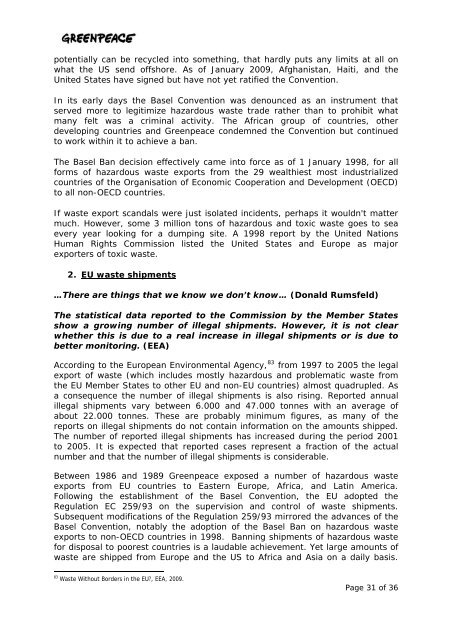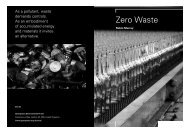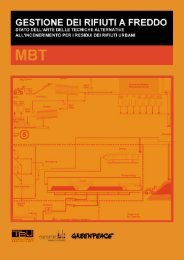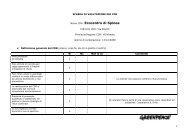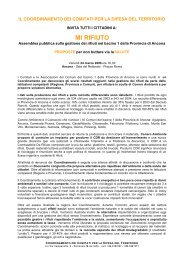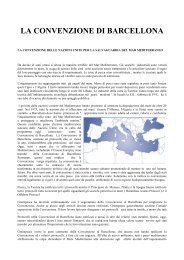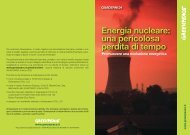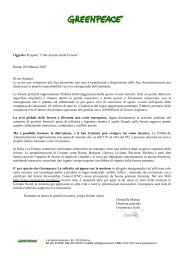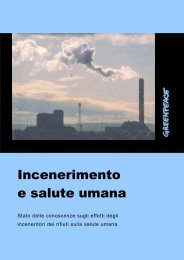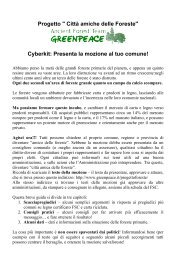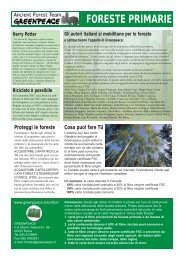The toxic ships
The toxic ships
The toxic ships
Create successful ePaper yourself
Turn your PDF publications into a flip-book with our unique Google optimized e-Paper software.
potentially can be recycled into something, that hardly puts any limits at all on<br />
what the US send offshore. As of January 2009, Afghanistan, Haiti, and the<br />
United States have signed but have not yet ratified the Convention.<br />
In its early days the Basel Convention was denounced as an instrument that<br />
served more to legitimize hazardous waste trade rather than to prohibit what<br />
many felt was a criminal activity. <strong>The</strong> African group of countries, other<br />
developing countries and Greenpeace condemned the Convention but continued<br />
to work within it to achieve a ban.<br />
<strong>The</strong> Basel Ban decision effectively came into force as of 1 January 1998, for all<br />
forms of hazardous waste exports from the 29 wealthiest most industrialized<br />
countries of the Organisation of Economic Cooperation and Development (OECD)<br />
to all non-OECD countries.<br />
If waste export scandals were just isolated incidents, perhaps it wouldn't matter<br />
much. However, some 3 million tons of hazardous and <strong>toxic</strong> waste goes to sea<br />
every year looking for a dumping site. A 1998 report by the United Nations<br />
Human Rights Commission listed the United States and Europe as major<br />
exporters of <strong>toxic</strong> waste.<br />
2. EU waste shipments<br />
…<strong>The</strong>re are things that we know we don’t know… (Donald Rumsfeld)<br />
<strong>The</strong> statistical data reported to the Commission by the Member States<br />
show a growing number of illegal shipments. However, it is not clear<br />
whether this is due to a real increase in illegal shipments or is due to<br />
better monitoring. (EEA)<br />
According to the European Environmental Agency, 83 from 1997 to 2005 the legal<br />
export of waste (which includes mostly hazardous and problematic waste from<br />
the EU Member States to other EU and non-EU countries) almost quadrupled. As<br />
a consequence the number of illegal shipments is also rising. Reported annual<br />
illegal shipments vary between 6.000 and 47.000 tonnes with an average of<br />
about 22.000 tonnes. <strong>The</strong>se are probably minimum figures, as many of the<br />
reports on illegal shipments do not contain information on the amounts shipped.<br />
<strong>The</strong> number of reported illegal shipments has increased during the period 2001<br />
to 2005. It is expected that reported cases represent a fraction of the actual<br />
number and that the number of illegal shipments is considerable.<br />
Between 1986 and 1989 Greenpeace exposed a number of hazardous waste<br />
exports from EU countries to Eastern Europe, Africa, and Latin America.<br />
Following the establishment of the Basel Convention, the EU adopted the<br />
Regulation EC 259/93 on the supervision and control of waste shipments.<br />
Subsequent modifications of the Regulation 259/93 mirrored the advances of the<br />
Basel Convention, notably the adoption of the Basel Ban on hazardous waste<br />
exports to non-OECD countries in 1998. Banning shipments of hazardous waste<br />
for disposal to poorest countries is a laudable achievement. Yet large amounts of<br />
waste are shipped from Europe and the US to Africa and Asia on a daily basis.<br />
83 Waste Without Borders in the EU?, EEA, 2009.<br />
Page 31 of 36


